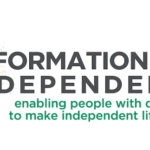UNSW Social Policy Research Centre (SPRC) and the Australian Council of Social Services (ACOSS) have released a new analysis of inequality in Australia pre-COVID-19, providing a baseline to measure the impact of the pandemic on income and wealth inequality.
The Inequality in Australia 2020: Part 1 – Overview report highlights the ameliorating effects of timely government policy responses, including increased JobSeeker and JobKeeper payments. However, it warns the pandemic’s long-term effect on income and wealth inequality will depend on how these policies evolve.
Using Australian Bureau of Statistics (ABS) data (2017-18), the findings show that, pre-COVID, the incomes of those in the top 20 per cent were six times higher than those in the lowest 20 per cent. That gap has widened since 2015-16, when the ratio was 1:5.
Data shows that, for the first time, average household wealth exceeded $1 million in 2017-18. However, the distribution of wealth in Australia was deeply unequal, with the average wealth of the top 20 per cent ($3,255,000) some 90 times that of the lowest 20 per cent ($36,000). Those in the lowest 10 per cent held $8000 in average net wealth, and the bottom 5 per cent held net debts of $5000.
Associate Professor Bruce Bradbury at the SPRC, the report’s lead researcher, says most Australians seem to think they are ‘middle income’, but middle incomes are lower than generally thought.
“In part, this stems from a confusion between average wages and average household incomes,” he says. “A couple with two full-time average wages ($82,000 each or $164,000 together) and two children is likely to think of themselves in the middle of the household income distribution. In fact, they are more likely to be in the second-highest fifth of living standards. If they don’t have children, they will be in the highest fifth of living standards.
“This discrepancy between perceptions and reality arises because many people don’t work full-time, average wages are greater than median wages and many households, particularly the retired, don’t have any people with earnings.”
Director of the SPRC, Professor Carla Treloar, says the report establishes a starting point to assess the impact of COVID19, high unemployment and government policies to protect incomes and jobs on the living standards of different groups in the community.
“This analysis is timely and important in setting a baseline against which we can measure the impact of the pandemic on income and wealth inequality in Australia,” Professor Treloar says. “Increasing inequality need not be an inevitable result of the current crisis. Whether we are ‘all in this together’ or driven further apart will depend on the severity and duration of the crisis and on the effectiveness of the national policy response.”
Dr Cassandra Goldie, ACOSS CEO, says timely action by the government to double the unemployment payment with the Coronavirus Supplement and create JobKeeper has temporarily raised the household incomes of people without paid work or at risk of losing their jobs.
“This report shows, however, that millions of people, pre-COVID, had very little by way of a financial buffer behind them. There is a real danger in now expecting people to spend down on their already meagre savings to survive. We need to support people’s incomes to prevent dramatic widening in both income and wealth inequality and the serious health, economic and social disadvantage that occurs.”
Dr Goldie says we have a choice about whether we prevent rising inequality from the COVID-19 crisis.
“A substantial, permanent increase in the JobSeeker Payment would ensure those who cannot get paid work can meet household costs. Well-targeted and jobs-rich economic stimulus could prevent a further increase in unemployment. Permanently removing liquid assets tests and waiting periods to receiving income support are also vital. Applied together, these measures will inoculate us against an increase in both income and wealth inequality and support our economic recovery from the pandemic,” she says.
The report also examines data on the impact of the pandemic and associated lockdowns on employment and incomes to explore the likely effect on inequality in Australia. It confirms the pandemic has had a stark impact on those in lower paid jobs. The average wage of people in the most affected industries is half that of people in least affected industries even before the pandemic. The majority of those affected by deep income losses are women and young people.
Key facts on income inequality
In 2017-18:
- The top 20 per cent of households have nearly six times the income of the lowest 20 per cent. This gap has grown since 2015-16 when the highest 20 per cent earned five times as much as the lowest 20 per cent.
- The average household disposable income for people in the highest 20 per cent of households is $4166 per week, more than twice the income of the middle 20 per cent ($1884 per week) and nearly six times that of the lowest 20 per cent ($753 per week).
- The main household income source across all households is wages and salaries (with 75 per cent of all income before tax), followed by 12 per cent from investments, 8 per cent from social security and 5 per cent from self-employment.
- Households in the highest 20 per cent receive almost two-thirds of all investment income (65 per cent), while those in the lowest 20 per cent receive over one-third (38 per cent) of all social security income.
In 2020:
- The unemployment rate stood at 7.4 per cent in June 2020 and is expected to rise to 10 per cent in December, assuming lockdowns are progressively eased. The outlook for employment and earnings is very uncertain.
- The industries most affected by the pandemic were twice as likely to employ workers with less than high school qualifications than the least affected industries, according to Melbourne Institute research. Average weekly wages in the most affected industries were less than half (46 per cent) of those in least affected industries, in part due to the high incidence of part-time employment in the former.
- To date, households in the lower half of the income distribution have benefited substantially from the JobKeeper and COVID Supplement payments, offsetting all or some of the increase in earnings inequality from COVID-19 and the lockdowns.
- However, from 28 September this income support is scheduled to be scaled back, with income support for people who are unemployed and the maximum rate of JobKeeper Payment both cut by $150pw. No commitments have yet been made to permanently increase the JobSeeker Payment when the Coronavirus Supplement is scheduled to end after 31 December – reducing payments for unemployed people, students and sole parents on the lowest incomes by another $125pw.
Key facts on wealth inequality
In 2017-18:
- Average wealth is relatively high and now exceeds $1 million for the first time ($1,026,000). Of this, 39 per cent is the main home, 21 per cent is superannuation, 20 per cent is shares and other financial assets, 12 per cent is investment real estate, and 9 per cent is other non-financial assets such as cars.
- However, wealth is distributed extremely unequally. The average wealth of the highest 20 per cent of wealth-holders is $3,255,000 – over 90 times the wealth of the lowest 20 per cent (with just $36,000).
- The wealthiest 20 per cent hold almost two-thirds of all household wealth (64 per cent), more than all other households combined.
- From 2003 to 2017, the average wealth of the highest 20 per cent grew by 68 per cent compared with 6 per cent for the lowest 20 per cent. This divergence has been driven by the asset types held by the top 20 per cent: investment property, superannuation and shares. Eighty per cent of financial assets like shares and property investment are held by the highest 20 per cent of wealth-holders.
- At the bottom of the wealth ladder, the most valuable asset holdings of the lowest 20 per cent are ‘other non-financial assets’ such as cars (48 per cent of their wealth holdings) and superannuation (38 per cent). At the top of the ladder, the wealthiest 20 per cent hold relatively less of their wealth in the main home (34 per cent) than those in the middle, and more of it in shares and other financial investments (26 per cent) and investment property (15 per cent).
- The average superannuation wealth of the highest 20 per cent is $496,000 – nine times that of the lowest 20 per cent ($58,000). The top 20 per cent hold 60 per cent of the value of superannuation holdings.
You can use this income calculator to see where you rank in the Australian income distribution.













